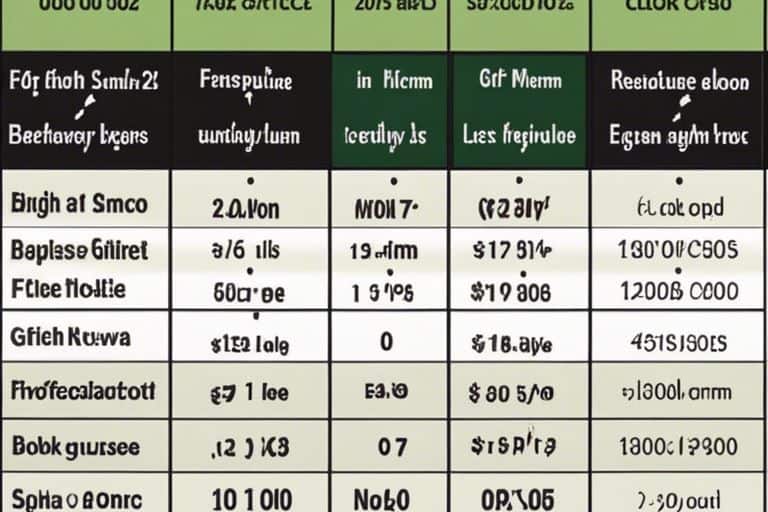What is the difference between a draw and a hook in golf?
Rarely do I come across a golfer who doesn’t want to improve their game. One of the fundamental skills in golf is the ability to shape your shots, and two of the most common shot shapes are the draw and the hook. Understanding the subtle yet crucial differences between these two types of shots can greatly impact your game. In this blog post, I will break down the differences between a draw and a hook in golf, and provide you with the knowledge and understanding to effectively execute these shots on the course.
The Basics of a Golf Swing
To master the art of golf, understanding the basics of a golf swing is crucial. Your golf swing consists of various components that work together to produce an effective and accurate shot. The swing comprises a combination of body movement, club positioning, and timing to deliver the ball to the desired target.
Key Components of a Golf Stroke
When it comes to executing a successful golf stroke, several key components come into play. These include the grip, stance, backswing, downswing, impact, and follow-through. The grip is crucial as it provides stability and control over the club. Likewise, the stance sets the foundation for the swing and affects the direction and power of the shot. As for the backswing, it determines the amount of power and control that can be applied to the ball. The downswing, impact, and follow-through are equally important in ensuring that the ball is struck cleanly and accurately towards the target.
Physics Behind the Ball’s Path
Understanding the physics behind the ball’s path is essential for golfers aiming to master their swing. When you strike the ball with the clubface, the interaction between the club and the ball causes the ball to compress and then rebound. This compression and rebound, along with the angle and speed at which the club strikes the ball, dictate the initial direction and trajectory of the ball. Additionally, factors such as air resistance, gravity, and spin imparted on the ball also play a significant role in determining its flight path. By understanding these principles, you can make adjustments and refinements to your swing to achieve the desired ball trajectory.
I hope this information has been helpful. I will be back with another chapter soon.

Analyzing the Draw
Any golfer who has experienced the confounding frustration of consistently slicing the ball off the tee understands the allure of a well-executed draw. While a draw and a hook may appear similar at first glance, the draw is a controlled, intentional shot that can greatly benefit a player’s game. Let’s take a closer look at what sets the draw apart and how it can be harnessed to improve your performance on the course.
Characteristics of a Draw in Golf
When executed correctly, a draw is a shot in which the ball starts slightly to the right of the target line before gently curving back to the left, for right-handed golfers. The key to achieving a draw lies in the clubface position at impact and the swing path. To hit a draw, I focus on a strong grip and a slightly closed clubface, creating a right-to-left spin on the ball. This imparts the desired side spin that causes the ball to curve in flight. The draw not only adds distance to my shots but also provides a more controlled trajectory, making it easier to land the ball on the fairway or green with precision.
Situational Advantages of a Draw
One of the most significant advantages of incorporating a draw into your game is its ability to navigate certain course conditions more effectively. When facing a dogleg left or a hole with a well-placed bunker or hazard on the right, a reliable draw can provide a strategic advantage. The left-to-right curvature of a draw makes it easier to avoid obstacles and position the ball favorably for the next shot. Additionally, when faced with strong winds that tend to push the ball off its intended line, a draw can help counteract these external forces and keep your shots on target. With its ability to add distance and control to your shots, the draw is a valuable tool in any golfer’s arsenal.

Decoding the Hook
After understanding the basics of a draw and a hook, let’s dive deeper into the mechanics of a hook shot. This type of shot, for many golfers, can be frustrating and difficult to manage, so it’s important to understand its nuances in order to improve your performance on the course.
Defining a Hook Shot in Golf
A hook shot in golf is characterized by a severe right-to-left ball flight for right-handed golfers (left-to-right for left-handed golfers). This means that the ball starts to the right of the target and then curves excessively to the left during its flight. This type of shot can be especially challenging as it can lead to missed fairways, added strokes, and frustration on the course.
Common Causes and Corrections for a Hook
One of the most common causes of a hook shot is an inside-out swing path combined with a closed clubface at impact. This means that the clubhead approaches the ball from an inside path and the clubface is pointing left of the target at impact, resulting in the ball spinning to the left. Additionally, a strong grip can contribute to a hook by encouraging the clubface to close through impact. To correct this, focus on swinging along your intended target line and ensure that your clubface is square at impact. Pay attention to your grip, making adjustments if necessary to prevent the clubface from closing too much through impact.
Comparing the Draw and Hook
Despite the draw and hook being commonly confused terms, they are actually two distinct shots in golf. Here, I break down the key differences between the two to help you become a more knowledgeable golfer.
| Draw | Hook |
|---|---|
| The ball starts slightly right of the target and then gently curves back to the left for right-handed golfers | The ball starts straight before sharply curving to the left for right-handed golfers |
| Typically used to navigate around obstacles or to control trajectory | Often an unintentional result of a poor swing, causing a loss of distance and accuracy |
Similarities and Differences
When it comes to similarities, both the draw and hook involve a left-to-right flight pattern for left-handed golfers. However, the key difference lies in the control and intention behind the shot. While the draw is a deliberate shot used for specific situations, the hook is often an unwanted result of a faulty swing. Understanding these distinctions is crucial for improving your overall skill and strategy on the course.
Impact on Golf Strategy and Performance
The impact of mastering the draw in contrast to avoiding the hook is undeniably significant for any golfer. While the draw can be a powerful tool for maneuvering around obstacles and shaping shots, the hook can lead to a lack of control, loss of distance, and accuracy. By refining your ability to execute a draw and minimizing the occurrence of a hook, you can greatly enhance your golf strategy and overall performance.

The Difference Between a Draw and a Hook in Golf
The key difference between a draw and a hook in golf comes down to control and intention. A draw is a controlled shot that starts slightly to the right of the target and then curves back towards the left, whereas a hook is an unintentional shot that starts right of the target and curves sharply to the left. By understanding the distinction between the two, you can better control your shots and improve your overall performance on the golf course.






